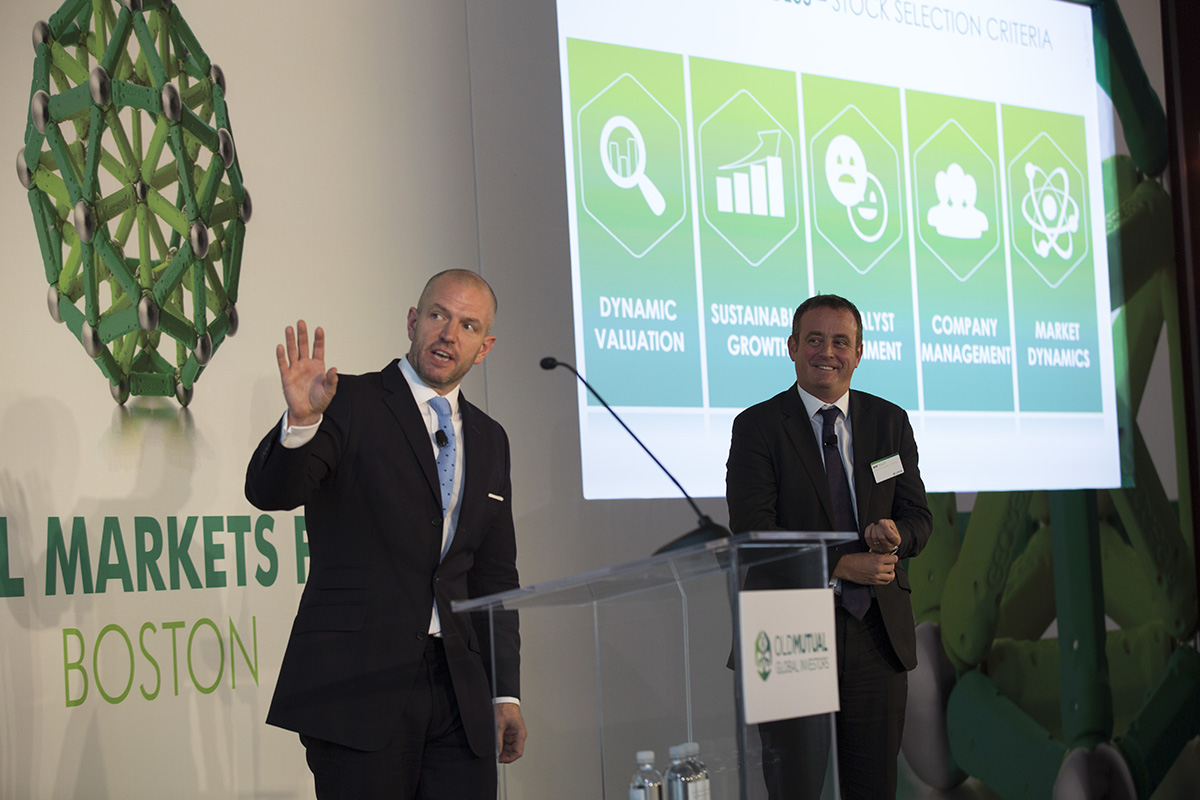What does the present moment in this cycle have in common with the 70’s? For Ned Naylor-Leyland, fund manager for Old Mutual Gold and Silver fund, there are several factors in the current economic situation that bear strong similarities to what happened at the end of that decade: rising inflation, a disenchanted working class, new tensions in the Middle East and the extinction of a monetary system.
Beginning with inflation, the asset manager comments on two terms which must be taken into account: ‘stagflation’ and the inflation camouflaged under the same price, but with less product in supermarket products, known as ‘shrinkflation’. “In the United Kingdom, especially in the last two weeks, the word stagflation has reappeared in the press, referring to a situation where there is lower growth in the economy, but there is inflation, which is the best possible environment for investing in gold. The main reason is that gold is a natural hedge for the loss of consumer purchasing power. There is a curious controversy on this issue. As the monetary authorities continue to say that we need more inflation, the Bank of England’s own workers are threatening to call a strike because their wages are not growing at the same rate as the cost of life”.
Another issue to keep in mind is when manufacturing companies maintain the prices of their products, but reduce quantity, quality, or both, to hide the increase in spending and inflation, something that is known as shrinkflation. “In the United Kingdom, the Toblerone chocolate is quite popular, its size was reduced leaving the same price and consumers wondering what had happened. This has not only happened with food and is something important to keep in mind, as statistics do not reflect actual inflation. This phenomenon is also experienced in jobs, which are categorized in ways very different to those previously used to categorize them, affecting the results of employment statistics. So I recommend being skeptical and keeping abreast of what is really happening in the real world.”
Something else they have in common is the disenchantment of the working class, which obviously manifests itself in the strikes, but which has also had repercussions on politics. “In the late 1970s, a B-series actor arrives at the White House without a previous political career, with the support of the middle and lower-middle working class of the United States, using a direct campaign directed at the male electorate at a time in which people were much more outraged than at present. Very similar motivations are what lead Trump to the presidency of the United States.”
In addition, the new tensions in the Middle East coupled with the extinction of the current monetary system are themes that were already lived more than four decades ago, with the OPEC crisis and the collapse of the system adopted in Bretton Woods which meant the unilateral cancellation of direct international convertibility of the dollar to gold.
“The two moments of greatest monetary easing in our recent history are the quantitative easing program known as QE and the ‘Nixon shock’, when President Nixon reported on television that the convertibility of the dollar to gold was suspended, thus ceasing its exchanges of $ 35 per ounce and abandoning the gold standard established after World War II for international transactions. The direct reaction of the investors in both cases was to think that there would be a strong loss in the purchasing power of the money and went in to buy gold. Although the answer was correct, monetary transmission mechanisms are not immediate. Both with the beginning of QE and in 1971, the price of gold increased very fast for about two or three years, and then corrected by about 50%. Between 1974 and 76, consumers perceived that they were losing a lot of purchasing power, gold spiked 700% to 800%. Returning to the current situation with the arrival of the QE, we can see that so far gold has repeated the same behavior as in the 70’s, with an initial rise and a new correction of 50%, being able to be in the ante-room of a strong climb “.
The Return of Gold
To put the current situation into context, Ned Naylor pointed out that after abandoning the gold standard, Nixon visited the king of Saudi Arabia and agreed to provide military protection in exchange for the dollar becoming the sole currency in oil trading and that profits would be reinvested in Treasury bonds. “Two years later, the entire oil market operated in US currency, and this created a system that operated on a petrodollars basis, which has been in place since the 1970s. That’s currently threatened, however, particularly by China’s performance, circumventing the system. All that has been seen in terms of geopolitics is related to this point, the loss of control of the petrodollars system. Until just 3 years ago, the world was still only using the dollar as a trading mechanism for crude oil and gas sales globally, but this has begun to change and will not return to the previous point. There are three possible outcomes to this changing environment in which they all involve gold, the Eastern solution, the Western solution and the global solution.”
To explain the Eastern solution, the asset manager focused on the Shanghai International Gold Exchange to explain how the gold standard system is returning to China and the role that Russia, Iran, Qatar and Saudi Arabia are playing as crude producers. These countries are selling part of their oil in renminbis to later convert this currency into physical gold in the Shanghai International Gold Exchange. “It is something that is happening now rather substantially way and represents a huge change with respect to the global monetary system. Do not expect to see news in the big newspapers about it because it is a very important strategic turn on the question of power and it is a return to a point in history where we have been before. It’s not something new; it’s the same pattern that was agreed upon after World War II.”
The Western solution consists of having more than 25% of the central banks’ total reserves in gold, being the second largest asset on its balance sheet, being supported by gold, although not explicitly backed by gold. “Gold is the only asset that does not represent an obligation for the counterpart. The euro has a huge amount of gold backing its assets, as it was designed about 15-20 years ago by central bankers in a context where only paper was used as a monetary instrument. In particular, Germany, Italy, France and Greece have more than 60% gold reserves.”
Lastly, the overall solution will most likely take into account gold. Last year, the International Monetary Fund admitted the renminbi as an accepted currency within Special Drawing Units (SDR), generating more global money, which reduces friction and transaction costs, improving the surveillance capacity of countries. Again, Naylor explains the importance of gold in this model: “This model would not work if gold were not acting as arbiter in the middle of this contest, establishing discipline and making the model work properly. This inclination for gold is happening mostly in Asia and Europe it is also going in that direction. It’s possible that the period from 1971 to today is only an exception.”
The arrival of cryptocurrencies
On the front cover of the January 1988 issue of “The Economist”, the magazine predicted the arrival of a global currency, illustrated by a phoenix with a gold coin hanging from its neck, resurfacing from the ashes of paper money, forecasting that the issue date would be 2018, and with a cryptographic symbol, frequently used in hacker culture, in the center of the coin.
According to Ned Naylor, those people who don’t believe that the arrival of cryptocurrencies is not a revolution do not fully understand what’s happening. “Bitcoin and Blockchain are changing the entire payment system, promoting a huge disintermediation in the financial system, particularly in Asia, where the application of Blockchain and Bitcoin technology has accelerated, which is likely to have disinflationary consequences.”
To conclude, the Old Mutual expert speaks about the positive part of Bitcoin’s irruption and of Blockchain’s block chain, reminding people of what money should be: a value depositor, a unit of account and a method of value exchange. “Before 1971, gold performed the three functions, but was replaced by paper money, which is not a deposit of value, because it is not an asset in itself. At the same time, Blockchain solves part of the problems of gold, its portability, its visibility and the facility with which it allows transactions, which is why Blockchain is paving the way so that gold resurfaces in the financial system formally as global currency. The next monetary system will be gold powered by cryptography. Changing to this type of currencies provides a huge reward for the system, with total supervision of the payments”.


